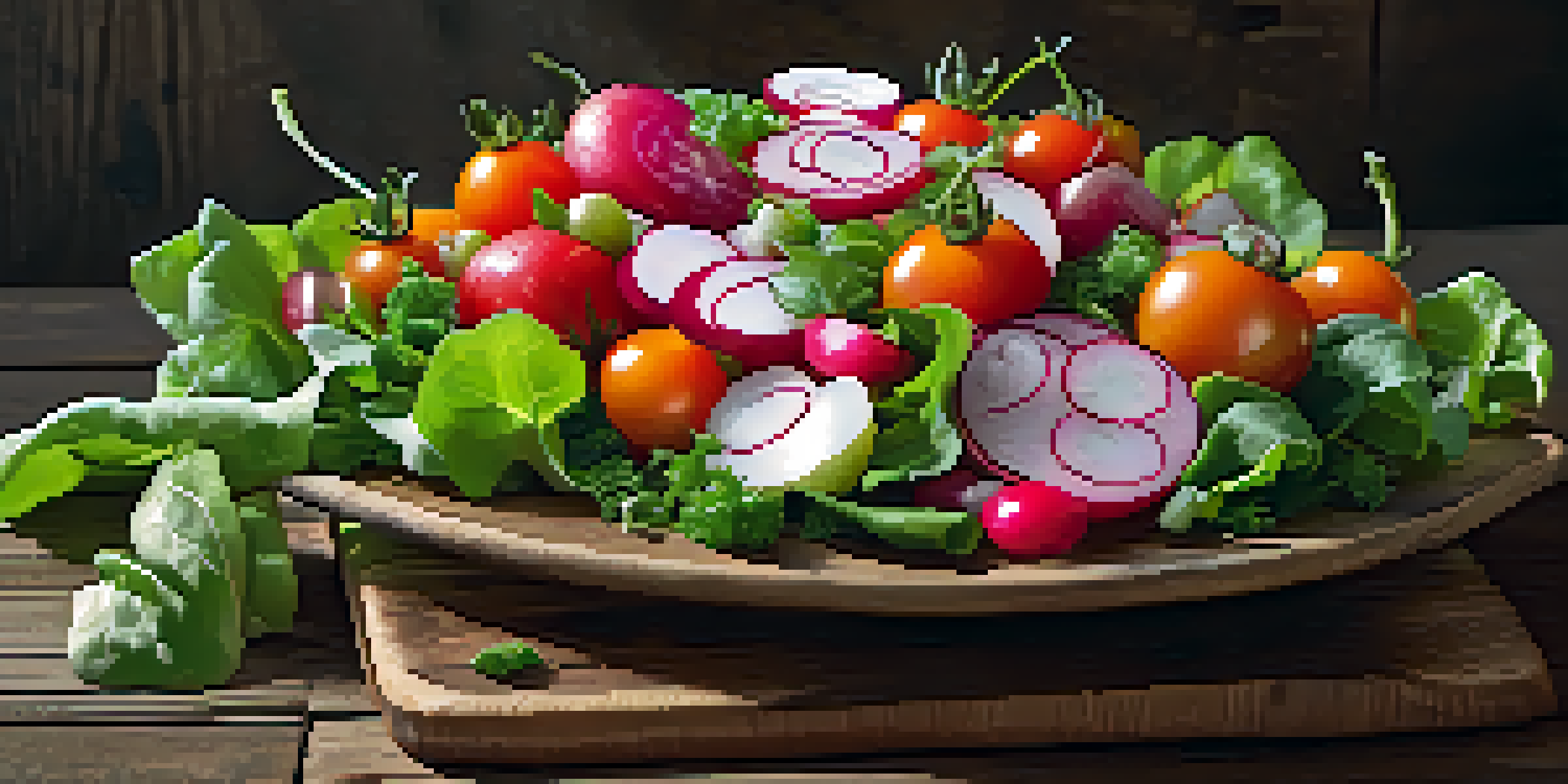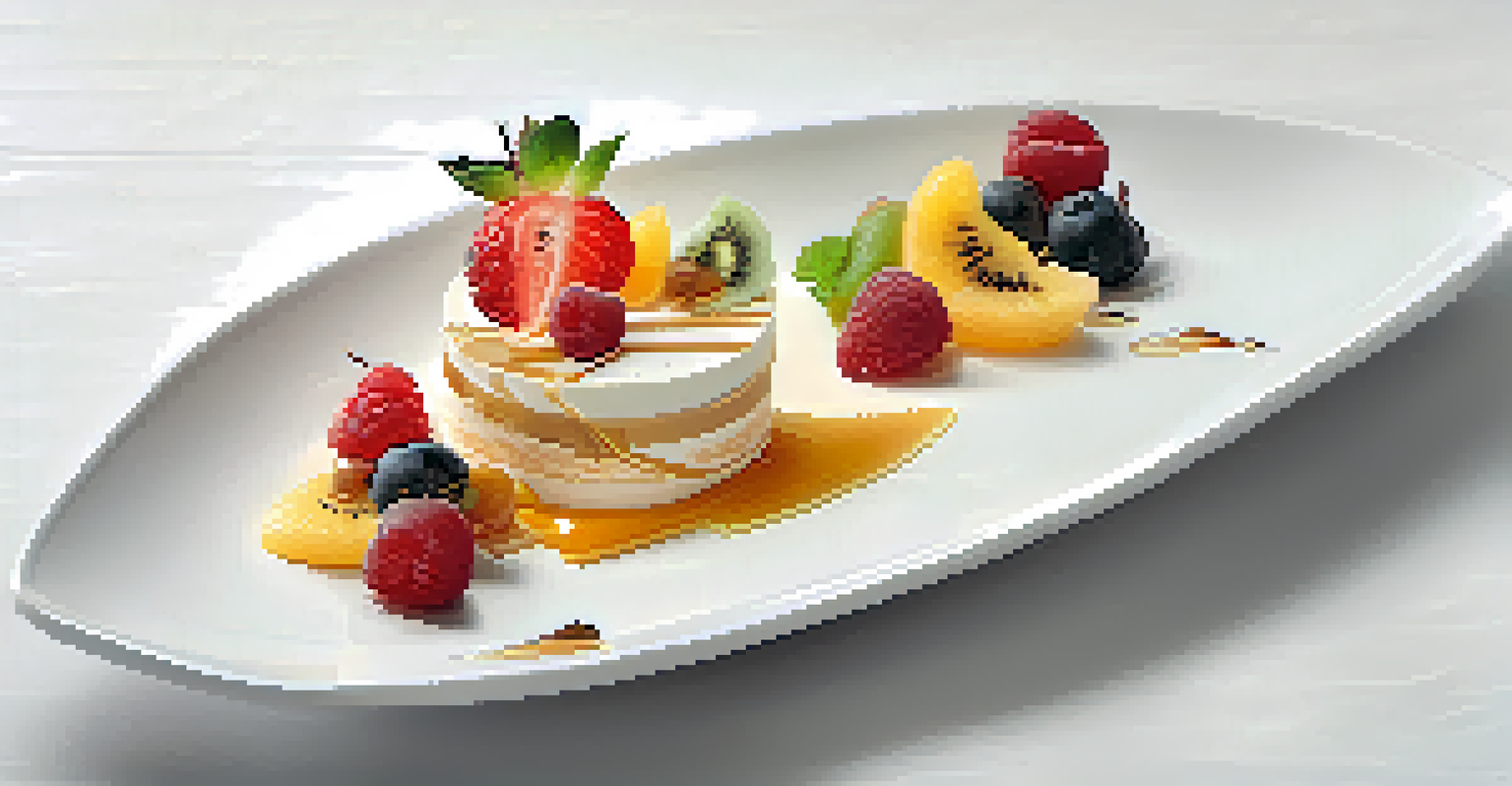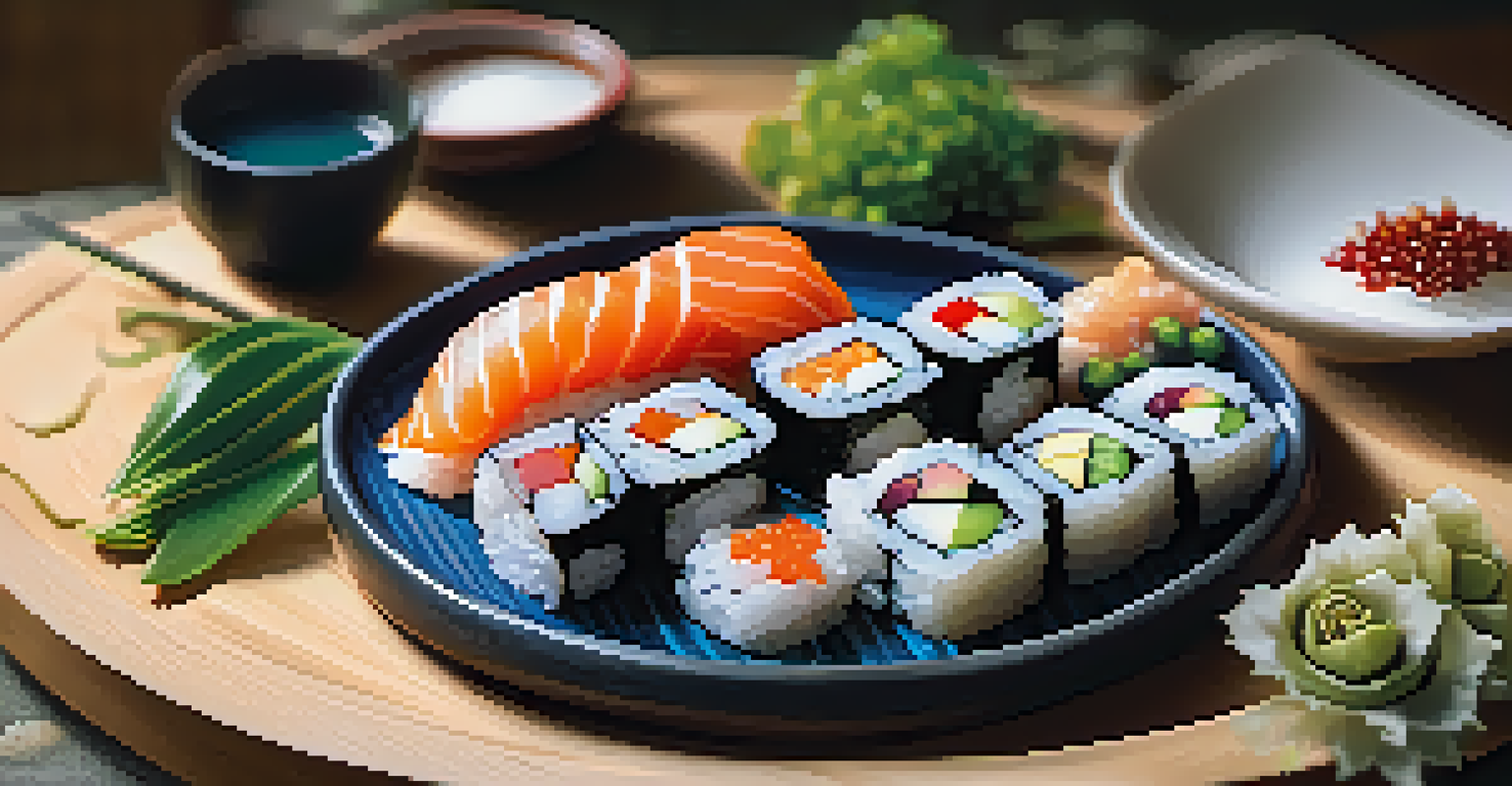A Taste of Art: The Influence of Painting on Food Design

The Intersection of Art and Culinary Design
Art and food may seem like two separate worlds, but they intertwine beautifully. Just as a painter uses a canvas to express emotions, chefs use ingredients to create visual masterpieces. This intersection invites us to appreciate food not just for its taste, but also for its visual appeal.
Food is art, and art is food. Each dish offers a canvas for creativity.
When you think about a beautiful dish, it's often the colors, shapes, and textures that make it stand out. This aspect of food design draws heavily from the principles of painting, where color theory and composition play essential roles. A striking plate can evoke emotions and set the tone for the dining experience.
For example, a vibrant salad arranged in a way that mimics a floral arrangement can transform an ordinary meal into an eye-catching centerpiece. This artistry encourages us to engage with our food on a deeper level, making every meal a feast for the eyes as well as the palate.
Color Theory: Influencing Flavor Perception
Color theory is a fundamental concept in both art and food design. Artists understand how colors affect emotions, and similarly, the colors on our plates can influence our perception of flavor. Bright colors often suggest freshness and sweetness, while darker hues might evoke richness and depth.

Consider how a plate of vibrant red tomatoes might trigger thoughts of sun-ripened sweetness, while a dish of earthy greens can suggest wholesome, robust flavors. Chefs often use color intentionally to guide diners' expectations and enhance their culinary experience.
Art Enhances Culinary Experiences
The intersection of art and food design invites us to appreciate dishes not only for their flavors but also for their visual appeal.
This relationship between color and taste is fascinating; it’s why you might find yourself gravitating towards dishes that are visually appealing. The interplay of colors not only makes a dish more appetizing but can also create a memorable dining experience.
Presentation: Crafting a Visual Narrative
Presentation in food design can be likened to storytelling in a painting. Just as an artist composes their piece to convey a message or emotion, chefs arrange their dishes to create a narrative. Each element on the plate contributes to an overall story, inviting diners to engage with the meal on a personal level.
The best meals are those that are not just eaten but truly experienced visually and sensorially.
Imagine a beautifully plated dessert that features layers of textures and flavors. The way it’s arranged can evoke feelings of nostalgia or excitement, much like a painting that transports you to another place or time. This narrative aspect makes each dining experience unique.
A well-thought-out presentation can enhance the dining experience, turning a simple meal into an occasion. This approach encourages chefs to think creatively, often leading to innovative culinary practices that draw inspiration from the art world.
Textures: The Art of Sensory Experience
Textures in food design play a crucial role in how we experience a dish, similar to the tactile quality of a painting. Just as artists use different brush strokes to create texture, chefs incorporate various elements to enhance the sensory experience. A meal that combines crunchy, creamy, and soft textures can be delightful and engaging.
Think about a dish that features crispy fried onions atop a creamy risotto. The contrast between textures not only adds depth but also keeps diners intrigued with each bite. This idea mirrors the way textures in art can create a sense of movement and dimension.
Color Influences Flavor Perception
Color theory plays a significant role in food design, affecting how diners perceive the taste of a dish based on its colors.
Incorporating different textures into food design encourages chefs to experiment and push the boundaries of traditional cooking. This exploration can lead to innovative dishes that surprise and delight, making dining a multi-sensory experience.
Cultural Influences: Painting Food Traditions
Cultural influences play a significant role in both painting and food design. Many culinary traditions are rooted in the artistic expressions of a region, often reflecting the local landscape, ingredients, and heritage. These cultural connections can inspire unique presentations and flavor combinations in food design.
For example, Japanese cuisine often emphasizes minimalism and natural beauty, mirroring the aesthetics found in traditional Japanese paintings. This approach can be seen in the careful arrangement of sushi, where each piece is a work of art in itself.
By understanding these cultural influences, chefs can create dishes that resonate with their heritage while innovatively presenting them. This marriage of tradition and creativity enriches the dining experience and allows for a deeper appreciation of both art forms.
The Role of Inspiration: Artists as Chefs
Many chefs draw direct inspiration from famous artists, using their works as a muse for culinary creations. Just as a painter might recreate the beauty of a sunset, chefs can craft dishes that reflect the vibrancy of Van Gogh's palette or the simplicity of a minimalist sculpture. This cross-pollination of ideas leads to exciting food design.
For instance, a chef might create a dish inspired by Monet’s water lilies, using colors and shapes that mimic the painting’s essence. This kind of inspiration encourages chefs to think outside the box and to conceptualize their dishes in new ways.
Cultural Roots Shape Food Presentation
Culinary traditions, much like artistic expressions, reflect local heritage and landscape, inspiring unique presentations and flavor combinations.
This artistic influence also helps in breaking down barriers between art and food, allowing for a richer, more diverse culinary landscape. As chefs embrace their inner artists, they contribute to a vibrant food culture that celebrates creativity.
Future Trends: Merging Art and Culinary Innovation
The future of food design is poised to embrace even more artistic influences, as chefs continue to push boundaries and innovate. Emerging trends suggest a growing emphasis on sustainability and the use of local ingredients, which can be presented in artistic ways that celebrate their origins. This approach aligns closely with contemporary art movements that focus on environmental consciousness.
Additionally, technology is playing a significant role in this evolution. With the rise of food photography and social media, chefs are increasingly aware of how their creations are perceived online. This awareness can inspire them to think artistically about their presentations, often leading to visually stunning dishes that are also delicious.

As we look ahead, the fusion of art and food design will likely continue to evolve, creating a dynamic landscape where creativity knows no bounds. This exciting future invites diners to engage with their food in new, meaningful ways, making every meal a memorable experience.